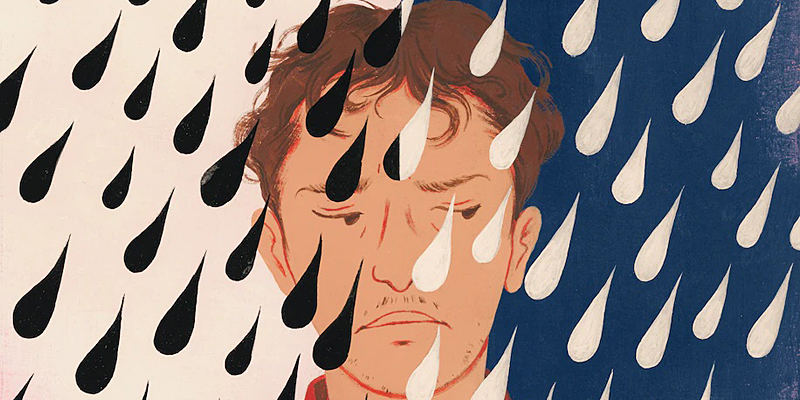| How to Know if It’s Depression or Just ‘Normal’ Sadness Richard A. Friedman - The Washington Post | |
| go to original October 11, 2022 |
|

![]()
(Celia Jacobs/Washington Post)
To say that we live in stressful times is an understatement. COVID. The climate crisis. A country riven with tension and political discord. What’s clear is that the world we live in has taken a toll on our collective mental health. Survey after survey tells us that we are stressed and that rates of depression and anxiety have skyrocketed.
Between 2019 and 2022, the rates of anxiety symptoms in adults jumped from 8 percent to 29 percent, and the rates of depressive symptoms rose from 7 percent to 23 percent, according to the Household Pulse Survey conducted by the National Center for Health Statistics in partnership with the Centers for Disease Control and Prevention. Some of the steepest increases were seen in males, young adults, Asian Americans and parents with children at home.
A quick look in our medicine cabinets is another gauge of our distress. In 2019, the CDC estimated that 15.8 percent of Americans were taking a medication for mental health; as of July, 25 percent of us are.
These are snapshot studies, and it’s too soon to know if this spike in depressive and anxiety symptoms will translate into a wave of serious clinical depression and anxiety disorders. But it is never too soon for people to wonder whether they are just stressed and sad — or clinically depressed.
Feeling sad is normal, but depression is not
It’s a critically important distinction. Feeling distressed and sad is a normal and expected response to what we’ve endured these past several years, including the social isolation and loss of human life brought about by the pandemic. It would be remarkable if we didn’t feel worried, anxious or sad given what we’ve experienced.
But unlike everyday sadness, clinical depression is never a normal response to stress or trauma; it’s a serious medical illness that is associated with significant impairment in our ability to function in major areas of our life — in relationships, at home and at work.
Major depression is common, affecting 17 percent of Americans in their lifetime, and it is a leading risk factor for suicide. It is estimated that 2 to 15 percent of people suffering from depression will die by suicide. (This broad range reflects the fact that depression runs the gamut from very mild to very severe, and suicide risk increases with severity of the illness.)
So how can you tell if you are depressed or just plain sad?
Ask yourself just two questions: how often in the past few weeks have you lost interest and pleasure in doing things? How often have you felt down or hopeless? You can check your score on this Patient Health Questionnaire. If your score is 3 or higher, there’s a high probability that you are depressed, not merely upset.
Richard A. Friedman is professor of clinical psychiatry and director of the Psychopharmacology Clinic at Weill Cornell Medical College.
Read the rest at Washington Post
Related: Losing Loved Ones: Grief Can Be a Lonely Journey, but It Doesn’t Have to Be (AP Direct)
Related: 8 Ways to Feel Less Anxious About Things Beyond Your Control (Washington Post)
We invite you to add your charity or supporting organizations' news stories and coming events to PVAngels so we can share them with the world. Do it now!